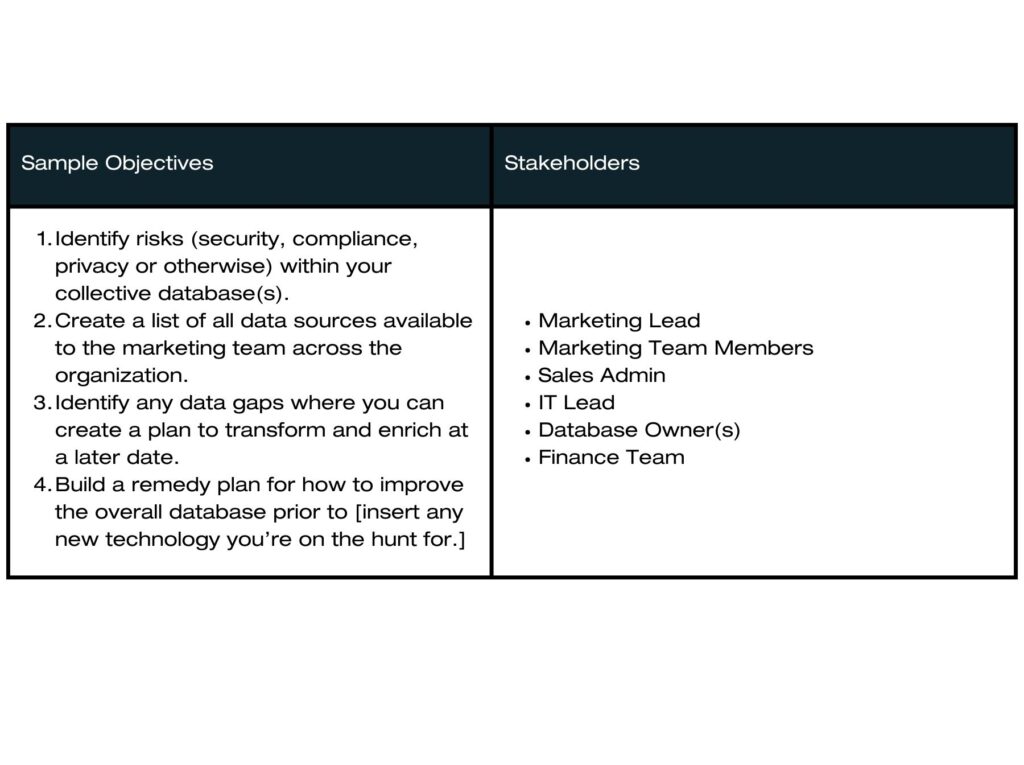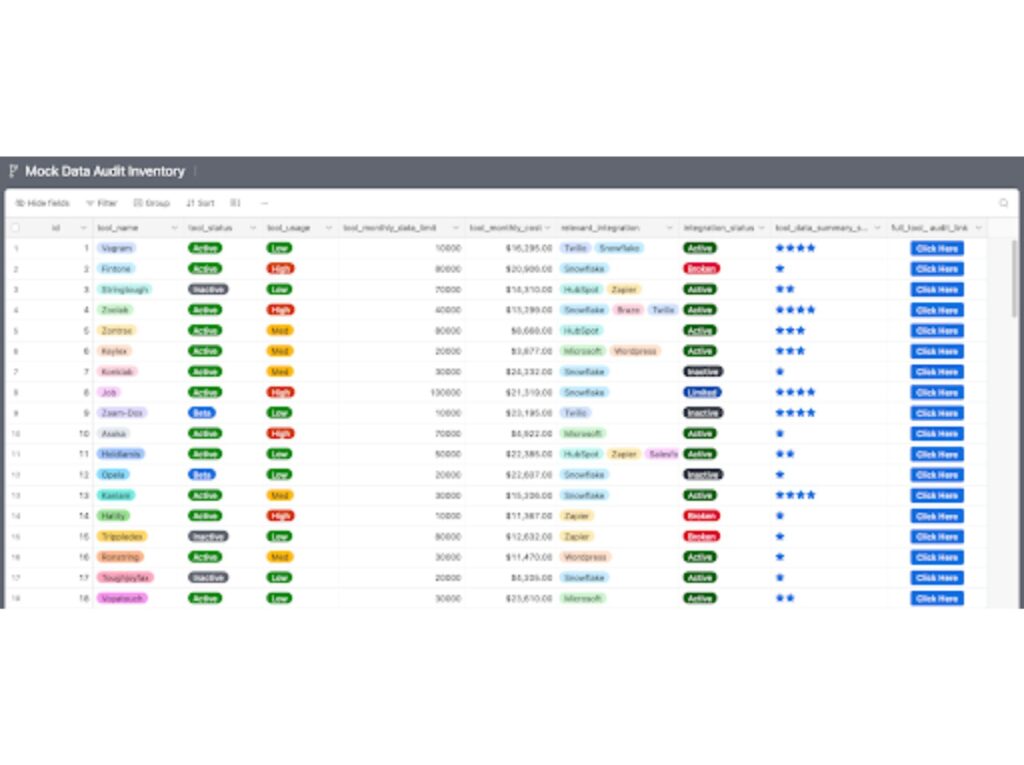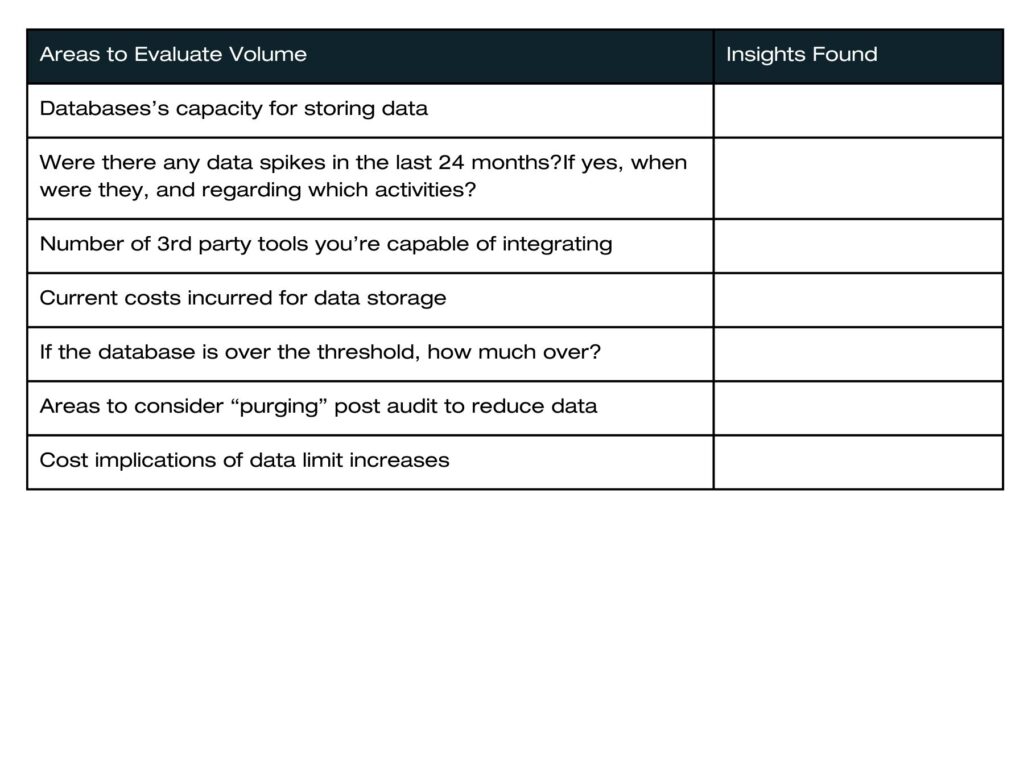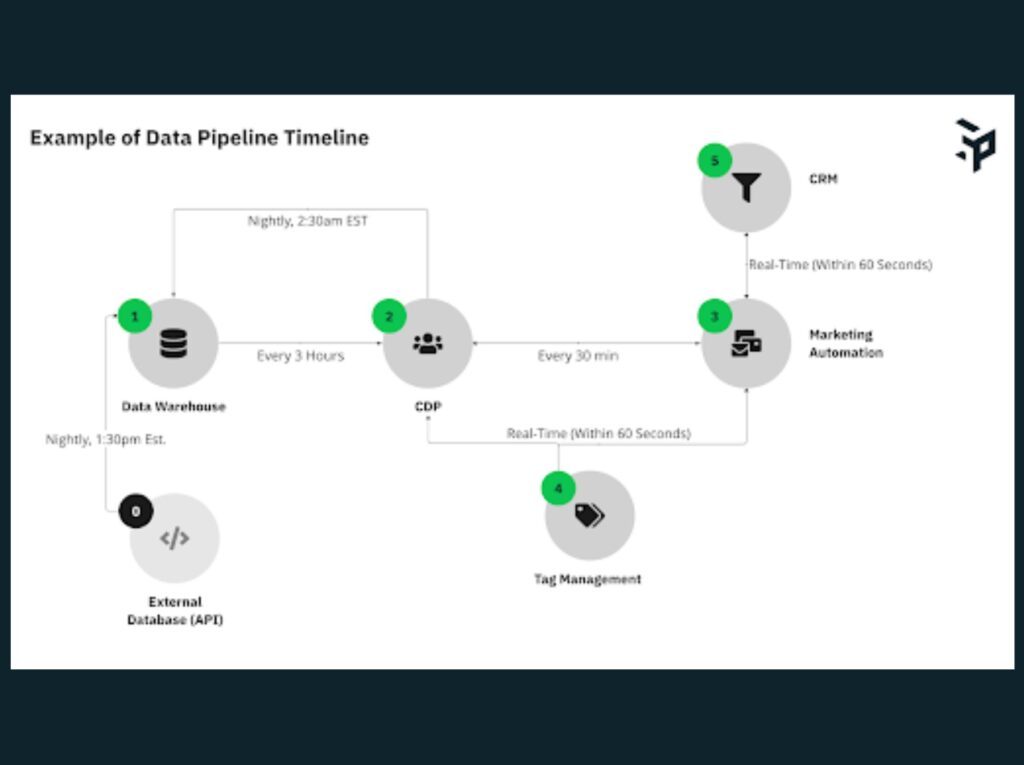9 Steps to Execute an Enterprise Marketing Data Audit

In today’s world, marketers crave immediate access to endless customer data at their fingertips. While we can all agree that data is the lifeblood of any business, not all data is created equal, and bad data can have even worse consequences than no data.
With the constant enhancements in tech, the revolving doors of marketing teams, and the ever-evolving data compliance laws, it can be a challenge to keep up with it all, but even more challenging is how these changes can create distrust in your own data. This makes it undeniably difficult to harness the power of accurate, compliant, and truly actionable data when you may not be confident with what’s at your fingertips today.
How can we solve this conundrum? The answer is relatively simple and so often underutilized: start with a data audit. By conducting an audit, marketers can identify potential data risks while ensuring their data is trusted, compliant, and, of course, ready to use whenever and wherever possible.
What is a Data Audit?
Imagine a data audit as a comprehensive check-up for your business’s vital information–like taking your organization’s data health temperature. Your databases are like the systems in the human body. Just as a well-functioning body relies on various systems like respiratory, skeletal, and nervous, your data must also hum along smoothly.
When you give your data a thorough check, it’s like fine-tuning your body’s mechanics. You spot areas that need more exercise, recognize those running smoothly, and tend to those that need extra care.
Though it might not involve test tubes and Bunsen burners, a data audit helps you increase efficiency, minimize risks, and unlock the full potential of making sharp business decisions.
What a Data Audit Does
Now, let’s dive into the nitty-gritty. A data audit delves deep into your data’s accuracy, completeness, consistency, and relevance. It’s your detective–spotting issues, identifying gaps, and highlighting opportunities for improvement. Plus, it ensures your organization dances to the tune of regulatory requirements like HIPAA, PII Compliance, CANSPAM, GDPR, or CCPA.
Key Takeaways from a Data Audit
Let’s clarify this–it’s not just about ticking boxes. Doing a data audit is all about:
- Boosting your team’s trust in your marketing systems
- Crafting bespoke reports tailored to your performance goals
- And, of course, shining a light on areas that might not be compliance-friendly, such as GDPR, CCPA, CASL, and more.
And the cherry on top? It empowers you to connect with your customers on a level that’ll have them feeling truly understood.
Getting Started With a Data Audit
While there are many ways to take a bite out of the proverbial data elephant in the room, we recommend unpacking the quality and accessibility of your data through these easy steps.
Step 1: Identify Your Data Requirements
In any technical project, start with defining your requirements to ground the team into a centralized goal for the data audit’s purpose and effort needs to be.
Define at most 3-5 objectives of your data audit, then those objectives with at least 2-4 key stakeholders who are closely invested in the health of your overall data or may be imperative to the audit itself. Below is a sample set of requirements you can use as a baseline for your upcoming audit.

Establishing guardrails through objectives like the ones stated here will place you in the best spot when you get started. This way, as the journey of your audit begins, you’re not boiling the ocean, but instead pinpointing meaningful obstacles and opportunities across your database in which everyone is aligned.
Step 2: Take Inventory of Your Data Sources
The first (and most important) step is to list all the tools and sources you have in place today in one organized inventory. Get started by making a list of critical 3rd party sources you want to maintain even if you decide to evolve your tech stack or invest in a new platform.
Aside from identifying the 3rd party data sources, this inventory should also include, at minimum:
- What tool or technology is storing this data?
- What is each tool’s primary purpose?
- When was it last updated, and how frequently is it updated?
- How is the data currently being used?
- When & where is it being used?
- What known challenges exist around this source today?
Below is an example of how the data inventory might look using our MarTech 360 inventory solution. This simple grid is a good starting point that you will continue to layer onto as you work through the rest of this audit.

PRO TIP: This Inventory Can Evolve into So Much More
You can also use this inventory to start a data dictionary for critical taxonomy and data points to leverage within your customer data platform (CDP) or marketing operations (MOPs) tools.
Step 3: Analyzing Data Completeness
Now that you have started with the inventory, we’ll evaluate each data source for several key factors, the first being its overall ‘completeness’.
Completeness refers to how comprehensive the information is within your database.
When looking at data completeness, consider whether all the data you need is available. For example, an email address is often a unique identifier used within customer databases. Evaluating how complete that information is across multiple sources can help you better understand how to tie customer data found in one database to another, enabling a more comprehensive look of your customer’s interactions.
Although an email address represents only a single data point, assessing the overall completeness of various data values is pivotal. By pinpointing the completeness of critical data components, fields, or tables, you can proactively mitigate potential risks preceding a migration, capitalize on opportunities for campaign optimization, or recognize gaps that might necessitate using third-party tools to enrich data for future endeavors.
Step 4: Unpacking Data Accuracy
As you likely already know, data generally decays over time; for example, marital status collected in 2012 may not still be relevant in 2022. Unfortunately, this data is often more complex to evaluate without input or augmentation from a 3rd party. However, we have some tips up our sleeve to show you the tricks of the trade here.
But first, let’s define Data Accuracy. Data accuracy refers to error-free records that can be used as a reliable source of truth. Data inaccuracy can be created by a number of different combinations, such as:
- Poorly interpreted data
- A migration or integration gone wrong
- Legacy or latent data
- Bad customer data entry due to not applying rules of entry
The list can go on, but you need to understand how to measure accuracy in a scalable manner and avoid inaccurate data coming into your evolving database.
Tips for Avoiding Data Inaccuracies
- Refer To Dates: Check the last update of data points that frequently change, like the last purchase, known addresses, or touch attributions. Focus on two key attributes here depending on how your data is structured. If your database admin has curated a field with a prefix of ‘last‘—measuring the most recent data change and its timing can help gauge accuracy — you can determine when that may have happened and what happened in the last instance. If you do not see anything of that nature, refer to any historic Date/Time fields where an expected data value may have changed to see how inaccurate or accurate your data may be.

- Formats: An inconsistent format amidst data might signal accuracy issues. This occurs more often than you think. We see this commonly with State-based data or utilizing String(Character) based text fields when a Numeric is actually required.

- Specify Field Types: When creating new fields in a database, refrain from opting for general text entry if the data isn’t truly textual. Define required field types to minimize incorrect entries. Many CRMs offer significant flexibility to tailor the right data types or picklist values, enhancing data cleanliness and reducing free-form entries. Below, you’ll discover suggestions for managing common data points often susceptible to inaccuracies, frequently found within customer databases.
It’s important to align on collecting relevant data from the right sources and ensuring you’re collecting it accurately to avoid common examples like the ones mentioned here.
Step 5: Investigate Data Anomalies
Database consistency rules require that data be written and formatted in ways that support your system’s definition of “valid data”.
Like data inaccuracies, anomalies can take many forms. One way to ensure data consistency is through anomaly detection. Utilize anomaly detection techniques to sift through your dataset for unexpected values or irregular events. Anomaly detection acts as a detective, flagging instances that deviate from the expected pattern.
Look out for discrepancies that arise from incorrect integrations or faulty imports. For instance, imagine your data should list country and time zone pairs, and suddenly you see “Spain” matched with “Eastern Standard Time Zone.” This discrepancy stands out as an outlier compared to the usual entries and might signal inconsistencies caused by merging data from different sources.
As you find scenarios like these, probe into the origins of merged or imported data. Anomalies often stem from data integration without consistent collection or maintenance practices. By understanding the sources and how they merge, you uncover the root causes.
Step 6: Pinpoint the Cost of Your Data Volume
Each technology piece in your stack likely has a set capacity or threshold currently in use by your business. During this audit, you might discover two potential challenges:
- Platform data exceeds the data threshold (often observed in Marketing Automation Tools).
- Platforms underutilizes the data volumes you’re paying for, resulting in suboptimal outcomes.
As you proceed with this audit, take note of the following regarding data volume:

As you progress through this process, you’ll assess whether your existing data storage needs an upgrade or a downgrade based on past usage trends. While conducting your audit, pinpoint the reasons behind the potential need for either an upgrade or a downgrade.
During your platform’s renewal period, this becomes a negotiation point with the SaaS provider. It’s a valuable leverage point. Moreover, if this adjustment demands a budget increase, your detailed justification for this activity strengthens your cost negotiation position.
Step 7: Analyzing Your Data Deployment Pipeline
Your data journey resembles a blend of a marathon, and a sprint, with moments of stillness. Specifically, synchronous and asynchronous data can enter your marketing database at any time. Understanding the rhythm of these entries is crucial, especially if you’re using real-time data for your campaigns or sales strategies, covering aspects like Abandoned Cart notifications, Push Notifications, Order/Appointment Confirmations, Qualified Lead Alerts, Intent to Buy Insights, and more.
During your audit, delve into the timeline of data imports and their synchronization with marketing and sales activities. This involves making decisions regarding real-time versus batch deployments, the optimal timing for these deployments, and their interdependencies. The diagram below illustrates a multi-platform deployment example, showcasing the interconnected nature of data flow.

Mastering the timing of these data inputs is critical to optimizing their impact on your sales and marketing efforts. Your audit will uncover whether adjustments or optimizations are needed for these deployments to align seamlessly with your business objectives.
Step 8: Is Your Data Telling The Right Story Through Reporting?
Let’s shine a light on your ability to weave compelling narratives from your data. Start by evaluating how effortless it is to craft insights and reports that capture crucial Key Performance Indicators (KPIs), engagement metrics, prospecting details, and attribution needs.
Begin by outlining a list of relevant metrics you wish to bring to life in your report. Then, assess how accessible and comprehensive this data is within your existing sources. If you encounter hurdles in generating these reports or find gaps in the data available, begin to highlight these challenges.
Don’t hesitate to pinpoint any difficulties encountered and provide insights into why these hurdles exist. Additionally, propose actionable solutions or improvements needed to remedy these issues post-audit. Doing so, you pave the way for a more streamlined and insightful reporting system, ensuring your data tells a crystal-clear story of your business performance!
Step 9: Summarize Your Data Insights
As we wrap up this data audit journey, filled to the brim with a tremendous amount of details, it’s time to package these findings into a neat, insightful summary.
We recommend applying a scoring rubric or an overall grading system that aligns with your business objectives. This approach validates the hard work invested in dissecting your data and translates complex analysis into a digestible format for any internal audience. Highlighting high-level scores in key audit areas is a great way to present your discoveries to leadership and other teams, allowing them to grasp the major takeaways and next steps easily.
This summary also serves as the connective tissue for creating a business case for your next phase, actually fixing the data! It serves as a foundation for advocating any new and required technology integrations or optimizations, offering a clear path for budget allocation that can be applied to future improvements.
Ready to Dive into Your Data? Come On, Let’s Go.
You know that feeling you get as you take a bunch of puzzle pieces and start fitting them together to reveal the big picture? That’s precisely what this process should feel like—making sense of your data gives you the ability to create game-changing results in your marketing and sales efforts.
By following the steps shared here, you’re not only becoming a data wizard, but, more importantly, understanding how data flows throughout your business and figuring out the best way to apply it across a wide range of use cases.
Are you feeling a bit overwhelmed? No sweat! We’ve got a fantastic squad of over 200 experts itching to lend a hand.
If this was all more than you can chew right now, our team’s got your back with a whole toolbox of solutions. From crafting future-proof data strategies to utilizing the power of our Tech Navigator assessment, we’re ready to help you ensure your tech and data are working in your favor.
Got burning questions about your data’s quality? Don’t hesitate to reach out. Talk to Shift Paradigm today and let’s embark on this epic data adventure together!






